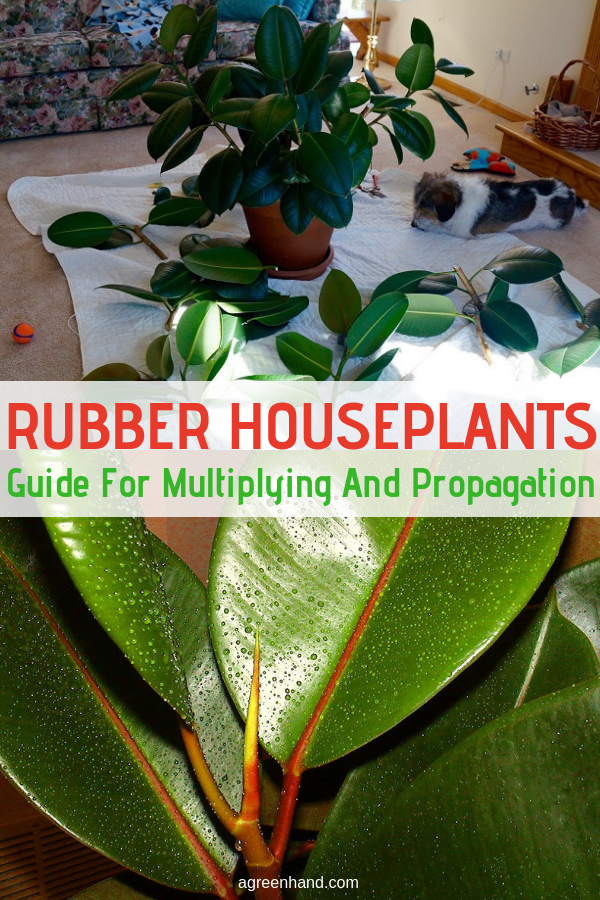Rubber houseplants are easy to multiply and propagate with plant leaves used as cuttings. Learn more about rubber plant propagation.
Rubber plants (Ficus elastica) received their common name from their latex properties. Actual rubber can be made from the rubber plants. These live plants are extremely easy to care for. Thus, their popularity for indoor plants.
Rubber plant propagation is also a fairly simple gardening trick that even beginning gardeners can accomplish. It is possible to go from one single potted plant to literally dozens with very little work. You can give the house plants away as gifts to show off your newly-found gardening skills.
Step 1
To begin the process of propagation, it is important to begin with a strong and healthy primary indoor rubber plant. Ideally, the plant should be at least 2-feet tall and have multiple leaves. Nurture and care for a main potted plant before taking on this gardening project in the early spring to late summer months.
Step 2
Sterilize a sharp, cutting knife by spraying with a light mist of general, all-purpose disinfectant spray. Allow the knife to dry. Place the knife at a 45-degree angle just below the joint of a leaf and the main stem of the indoor plant.
Make a slice into the rubber plant. Grasp the large leaf and gently tug to disconnect the leaf and its stem from the primary plant. Don’t worry! You won’t kill the potted houseplant by taking a cutting.
Set the new cutting aside on a piece of newspaper.
Step 3
Drill a drainage hole in the bottom of an 8-inch or 10-inch potted plant container. Layer the bottom with large rocks. Fill the container three-quarters full of an organic, porous potting soil mixture. Use your thumb to make a large hole in the center of the soil.
Step 4
Lift the rubber plant cutting off of the newspaper. Place the lower half of the stem under warm, tap-water. Dip the lowest quarter section of the cutting in a powder rooting hormone.
Place the cutting with the rooting hormone into the hole made in the center of the potting soil mixture. Tap the soil around the cutting to secure it into the dirt. Water the potted houseplant with warm, tap-water until water drains out of the potted plant container’s bottom.
Step 5
Select a location in indirect sunlight, such as a North or South window. Gently slide a clear plastic bag over the entire live plant. Tie the bottom loosely. Set the rubber plant in the window. Keep covered for two weeks.
Step 6
After two weeks, remove the plastic bag from the indoor plant. Water with warm, tap-water until the dirt is moist but not soggy. Replace the potted plant back in the original location. Wait for a minimum of two months prior to applying any liquid fertilization.
You can multiply and propagate more than one cutting from a single, mature houseplant. Never remove more than 25 percent of the original leaves. Multiplying and propagation done during the late spring and summer gives the mother rubber houseplant a chance to grow new leaves. Beginning gardeners and experts can use the above steps for multiplying rubber plants, whether you choose to propagate one or a dozen.



